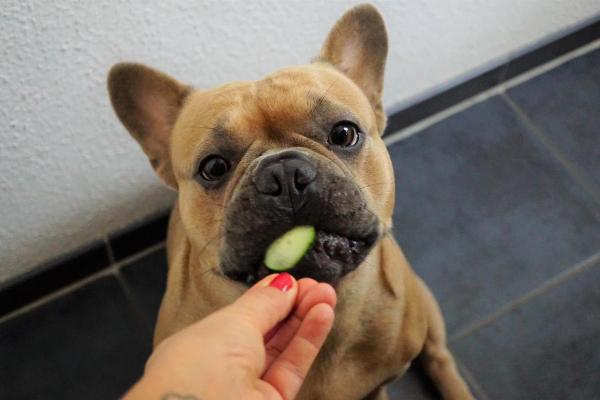You may eventually need to think about Dog Kidney Failure – When To Euthanize. Recognizing illness in your dog and seeking treatment as soon as possible are the best ways to keep them as healthy as possible. Older dogs frequently experience canine kidney failure, which frequently goes unnoticed for a long time before symptoms appear. Once you know everything there is to know about dog kidney failure, including when to put your dog to sleep, you’ll know what to expect. There are many treatments available when your dog has been diagnosed with this condition.
Chronic renal failure is the kidneys’ inability to effectively filter waste products from the blood. The majority of dogs with kidney failure produce a lot of urine, but the toxic wastes aren’t getting out. Slowly spreading, the illness is typically caused by ingesting toxins or being poisoned, like antifreeze. Reduced blood flow or oxygen delivery to the kidneys, infection, and urinary obstruction are all possible symptoms of acute kidney problems. Long-term kidney disease can cause kidney damage that isn’t reversible. Cysts in the kidney, chemotherapy drugs, antibiotics, and birth defects can all be contributing factors.
An increase in thirst and frequent urination are two of the first signs of kidney failure because as the kidneys deteriorate, the body needs more fluids. Other noticeable symptoms include:
The veterinarian will initially advise changing to a diet low in sodium and phosphorus, which may help to slow the progression of kidney failure. Natural supplements like vitamin B and C complexes can help replace depleted vitamins and increase appetite, and omega-3 fatty acids from fish oil have anti-inflammatory properties that can reduce kidney inflammation. Reducing stress improves quality of life, and alternative medications include anti-hypertensive options like ACE inhibitors. Regular acupuncture and natural flower essences have both been shown to safely be used in conjunction with conventional treatments to help slow the progression of kidney failure.
Following a diagnosis of end-stage kidney failure, your veterinarian will discuss with you how to keep your dog comfortable. You can: Make sure your dog has a comfortable bed that is quiet, warm, and cozy with a blanket and toys; spend as much time as you can with your dog because this will promote companionship and calm; monitor interactions with others to ensure gentle play; and keep your dog clean and dry by regularly bathing and brushing him.
An overview of kidney disease in dogs
However, when the kidneys suffer significant damage, their reserve is exceeded and they are unable to continue performing essential tasks. As toxins accumulate, the body is unable to maintain homeostasis. Anemia develops, electrolytes become out of balance, blood pressure rises, and dehydration starts (i e. low red blood cell count) occurs.

Sometimes kidney disease has a sudden (i. e. acute) onset. The dog becomes seriously ill quickly and might need to go to the emergency room for a vet visit. Other times, the disease progresses more slowly and the kidney function declines gradually (i e. chronically). Early on, these dogs frequently just appear “off” or “sluggish,” but chronic kidney disease can also develop into an emergency requiring critical care. Both illnesses can result in a variety of unsettling symptoms.
The early symptoms of kidney disease, particularly the chronic variety, can frequently be subtle. The symptoms of Cushing’s disease in dogs and diabetes mellitus overlap, which further complicates matters. You might notice that your dog is asking to use the restroom more frequently and has a higher level of thirst. These signs are called polyuria and polydipsia. If you see them, you should schedule an appointment with your adorable dog’s veterinarian right away.
You may notice several or all of the following signs as your dog’s kidneys continue to fail:
Even if you are aware that your dog has kidney failure, please consult your veterinarian if you notice any of these symptoms in your dog. Your dog’s veterinarian will likely want to examine him as well as check his blood work for red blood cell and kidney values. For identifying kidney disease early on and monitoring its development, this information is helpful.

It is typical for your puppy to need hospitalization if the veterinarian determines that your dog has acute kidney failure (or acute-on-chronic kidney disease, where pre-existing kidney disease suddenly worsens). Your dog might be given intravenous (IV) fluids, intensive care, and round-the-clock observation during that period.
Fluids aid in the body’s detoxification process and electrolyte balance. This can help your dog feel better. Additionally advantageous to your dog are blood pressure, nausea, and/or appetite-stimulating drugs.
When your dog is healthy enough to return home, he or she will need follow-up appointments to reevaluate kidney function and check for the presence of chronic disease.
Alternatively, if your dog has chronic kidney disease, the severity can vary. Sometimes it is very mild. The majority of the time, dog owners are unaware that their dog has kidney disease until elevated kidney values appear on routine screening blood tests. In other cases, the dog may have moderate to severe kidney disease and be exhibiting more symptoms.
In either case, your veterinarian may use the International Renal Interest Society (IRIS) guidelines to determine the stage of kidney disease in your dog after diagnosis. This knowledge affects prognosis and helps direct treatment for kidney disease.
Chronic kidney disease in your dog may occasionally be managed at home using medications and/or subcutaneous (SQ) fluids. However, your veterinarian may advise 24 to 72 hours of hospitalization if your dog’s symptoms are severe or if the results of his or her blood work show advanced disease. Usually, once your beloved dog’s condition improves, you can take care of them at home. This may include:
At-home methods for improving quality of life
Managing kidney disease is multi-factorial. There are some at-home adjustments that can improve your dog’s quality of life in addition to the medications and therapies we discussed.
Reduce the stress of increased urination
Due to increased thirst and urination, it can be upsetting for a dog to have accidents in the home. There are a few options that are beneficial for easing your dog’s stress and simplifying cleanup for you:
Given that your dog’s appetite changes throughout the day and even from moment to moment, you can provide him with a variety of kidney-safe diets (dry and/or canned). And to stimulate appetite through variety, you might want to try topping the regular diet with jarred baby foods.

Rinsing your dog’s mouth with green tea can be calming if they are developing mouth sores. Alternatively, if your dog permits you to administer it, your veterinarian may prescribe “magic mouthwash.”
Please be aware that not every canine patient will respond optimally to a particular set of tools. To determine what will benefit your adorable dog the most in the long run, some trial and error may be necessary.
What’s challenging about kidney disease is that there isn’t a reliable, consistent “easy” response to these questions when managing a dog with kidney disease at home: “What’s next?” and “How long can we manage his or her disease?”
Sometimes, years after the diagnosis, dogs with kidney disease can be managed at home. Additionally, the dog can enjoy a very fulfilling life as a result. In other cases, dogs with kidney failure may experience a rapid progression of their condition, going from mild to severe in a matter of weeks, and their quality of life may suffer. So how do we evaluate the prognosis?.
As was already mentioned, we can determine the dog’s current stage of kidney disease based on the severity of blood work changes. This helps us understand how far the disease has progressed. However, it still does not indicate how quickly the patient might progress through the remaining stages of the illness. Although it is emotionally challenging, we frequently have to adopt a bit of a “wait and see” attitude.
In some cases, though, we can predict a dog’s general prognosis based on how he or she reacts to therapy in the days and weeks following the initial diagnosis. As treatment progresses, positive prognostic indicators include:
FAQ
How long does end stage kidney failure last in dogs?
Dogs with End-Stage Renal Disease Eventually, these remaining nephrons will also stop functioning. Each stage of the disease’s progression results in a worsening prognosis and shorter survival times. According to IRIS, the median survival time for stage 4 kidney disease is 14 to 80 days.
What are the signs of end of life kidney failure in dogs?
In the early stages, excessive thirst and a large amount of urine are signs of kidney failure. Lethargy, a lack of appetite, and vomiting are some of the later signs of acute kidney failure. When a pet has severe kidney failure, the amount of urine may actually decrease or stop entirely.
Is kidney failure painful for dogs?
Kidney failure is typically accompanied by a great deal of pain. Most of the time, the symptoms are obvious, such as tremors, vomiting, and appetite loss. It is important that you prioritize your dogs’ comfort.
What happens when a dog dies from kidney failure?
The following are the most typical indications that a dog is experiencing kidney failure: Uremia: A buildup of waste products in the body causes a distinct ammonia smell, which is especially noticeable on the breath. Gums that are dull and dry to the touch: The gums are paler. Mouth ulcers: Uremia causes raw mouth ulcers that are painful.